Xinjiang Insider: Creating an “Oilfield” Rivaling America’s Largest One
Xinjiang-Made Cotton-Picking Machines Harvest Australian Cotton
The April 2nd issue of Xinjiang Daily reported the story of an engineer from an agricultural machinery company in Xinjiang.
In 2014, Liang Dingyi joined a Zhejiang-based agricultural machinery company.”The predicament of China’s cotton picking machine being technologically constrained motivated me to contribute to domestic harvester development,” Liang recalled. Xinjiang, accounting for most of China’s cotton output, became his proving ground.
 Liang (left) in a cotton picking machine factory
Liang (left) in a cotton picking machine factory
Later, he joined Xinjiang Boshiran Intelligent Agricultural Machinery Co., Ltd. To test the performance of the cotton pickers, Liang and his team conducted intensive field tests in Luntai County. For one month, they operated two prototype machines across thousands of acres, working day and night to pick cottons.
 Liang demonstrating the performance of a cotton picker in the field
Liang demonstrating the performance of a cotton picker in the field
Thanks to the efforts of Liang and his team, the company’s cotton pickers have achieved excellent results in market adaptability. In 2023 alone, the company sold 602 machines, accounting for more than 40% of the Chinese market.
Today, the company has long established an overseas marketing department. As early as 2019, the first batch of three cotton pickers were exported to Uzbekistan for field harvesting experiments. Due to the recognition of local farmers, in 2023, Uzbekistan customized another 54 cotton pickers, breaking the export record of China’s domestic cotton pickers at that time. At present, the company’s products are also sold to many countries and regions including the five Central Asian countries, South America, and Australia.
Turning Coal into Gas, Xinjiang Will Create a “Big Oil Field”
Coal – the beating heart of the Industrial Revolution – once pumped energy into countless machines, fueling the rapid growth of modern cities. Yet in the era of climate change, crude and inefficient coal usage has become an unsustainable burden. Now, a newly launched project in Xinjiang aims to transform this fossil fuel into cleaner-burning natural gas, making coal consumption more environmentally friendly while enabling more efficient conversion into everyday consumer products.
On March 22, the 2 billion cubic meters/year coal-to-natural gas project in Zhundong, Xinjiang was officially started, and the foundation construction of the building is currently underway.
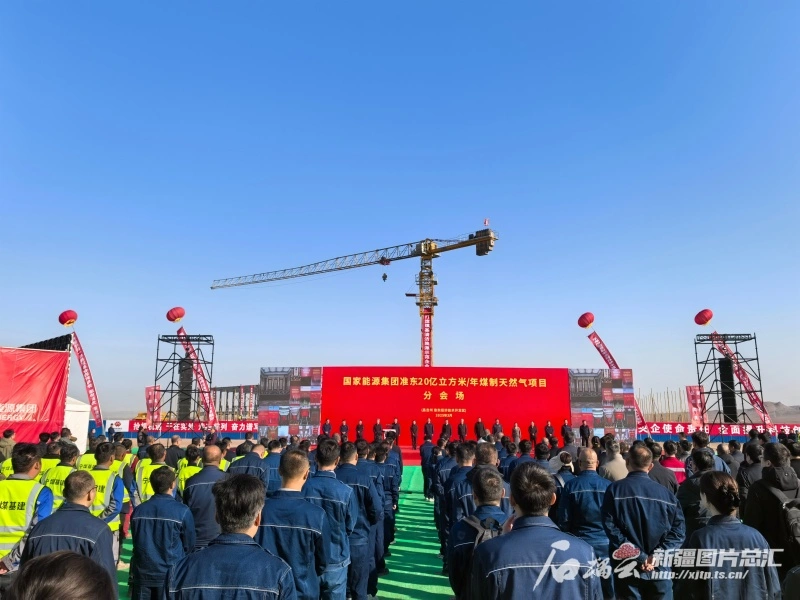 Starting ceremony of the Zhundong coal-to-natural gas project
Starting ceremony of the Zhundong coal-to-natural gas project
Upon completion, the project will produce 1.833 billion cubic meters of natural gas yearly, enough to meet the annual needs of 5.0228 million three-person households, while co-producing 167 million cubic meters of liquefied natural gas (LNG) for vehicle fuel,” said Wang Jishan, Director of Engineering at China Energy Xinjiang Coal-to-Gas Co.
In addition to this project, two other coal-to-gas facilities—each with 2 billion cubic meters annual capacity—are planned for Xinjiang. Using the industry standard conversion (1,255 cubic meters of gas = 1 ton of oil equivalent), the combined 6 billion cubic meters output from all three projects would equal 4.78 million tons of oil.
Notably, on the same day this coal-to-gas project broke ground, the 1-million-ton-per-year coal-to-oil project by Yitai Ili Energy Co. resumed preparations in Qapqal Xibe Autonomous County. And another 4-million-ton-per-year coal-to-oil facility in Hami City had already launched a year earlier.
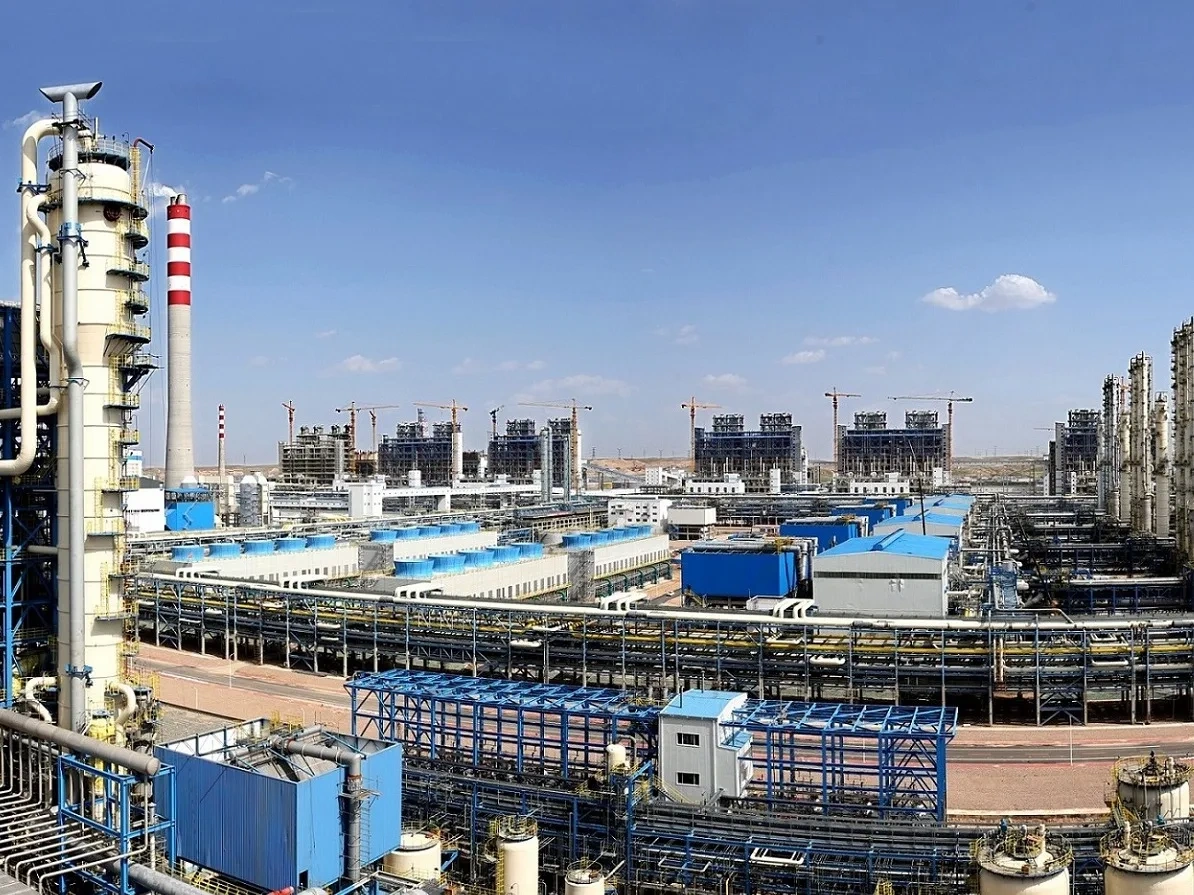 Construction site of the Yitai Ili coal-to-gas project
Construction site of the Yitai Ili coal-to-gas project
If all five coal-to-oil-and-gas projects operate at full capacity, their total output will reach 9.78 million tons of oil equivalent, comparable to the 2024 total oil and gas production of China’s third-largest oilfield, the “Northwest Oilfield,” and slightly lower than the output of Permian Basin oilfield, the highest-producing oilfield in the US.
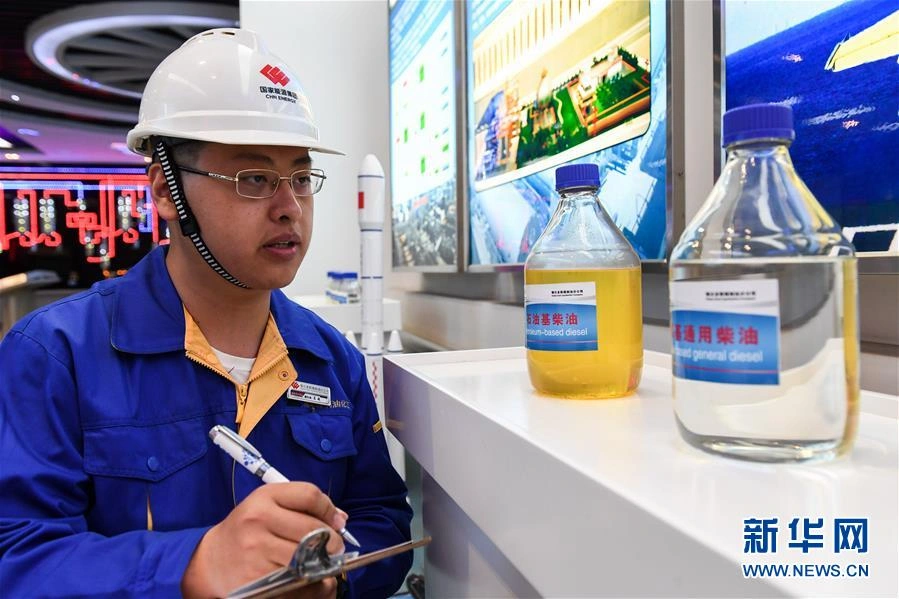 A worker is observing two bottles of diesel oil. The left one is normal one. The right one is converted from coal.
A worker is observing two bottles of diesel oil. The left one is normal one. The right one is converted from coal.
Public information shows these five projects represent a total investment of approximately ¥240 billion ($33.6 billion), with annual coal consumption of about 35 million tons, directly creating around 13,000 new jobs.
However, the development of coal-to-gas and coal-to-oil projects has not been that easy. Pipeline transmission costs and fluctuations in international oil prices previously caused sustained losses for Xinjiang’s projects, even leading to some being suspended outright.
Recent years have seen improvements in these unfavorable conditions. Take two coal-to-gas enterprises in Ili Kazakh Autonomous Prefecture as examples: with an annual production capacity of 3.3 billion cubic meters, they now profitably sell their synthetic natural gas to Zhejiang, Shandong and other eastern regions through the West-East Gas Pipeline.
Encouraged by this success, multiple enterprises across Hami, Turpan, Changji Hui Autonomous Prefecture, and Ili Kazakh Autonomous Prefecture are actively planning new coal-to-gas projects. Industry projections indicate Xinjiang’s coal-to-gas and oil sector will enter a period of rapid investment growth between 2025-2030.
Against the current backdrop of declining coal prices and increasing pressure for energy conservation/emission reduction, these coal conversion projects represent an ideal pathway for Xinjiang’s coal resources.
Xinjiang Smoothly Removed 900 Tons of a Highway Bridge in 3 Hours
How long does it take to demolish a 60-meter-long, 900-ton, 5.2-meter-high highway bridge? Xinjiang’s latest record is 3 hours.
On April 3rd at 13:30, the G30 Lianhuo Highway expansion project in Xinjiang introduced modular bridge demolition technology to reconstruct this section of the highway.
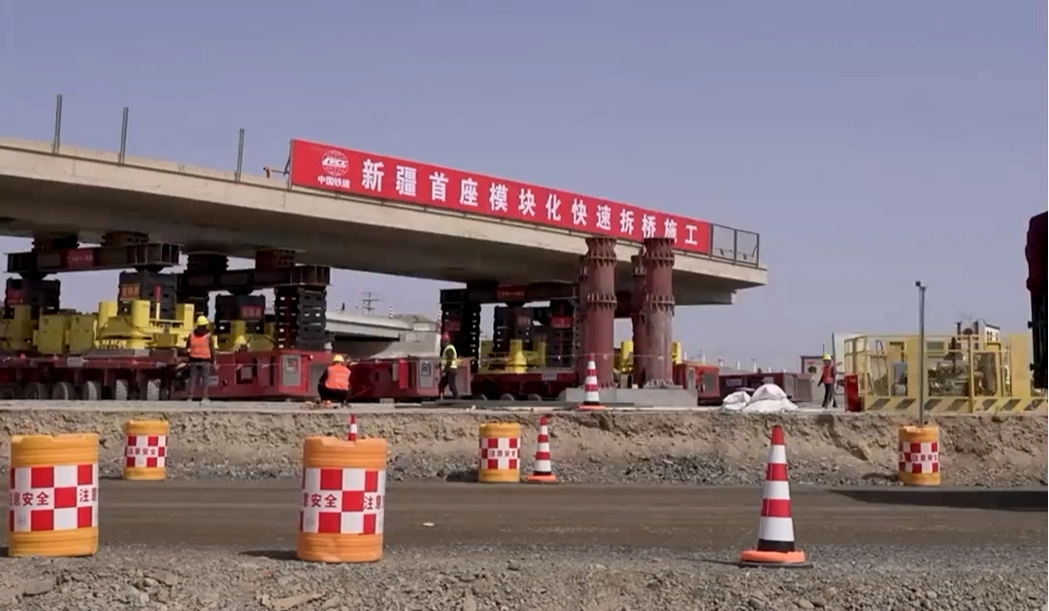 Construction site of the G30 Lianhuo Highway expansion project
Construction site of the G30 Lianhuo Highway expansion project
Due to the high daily traffic volume on this highway section, traditional construction methods would have significantly disrupted cross-regional vehicle flow. The construction team therefore adopted SPMT (Self-Propelled Modular Transporters) technology – an integrated bridge demolition and installation solution – to execute modular removal of the existing bridge.
During the operation, two sets of modular transporters positioned beneath the bridge structure, hydraulically lifted the 900-ton span, then gradually moved it backward before lowering onto temporary supports. The entire demolition process was completed in just three hours.
“Compared with conventional techniques, SPMT reduces bridge demolition time by 75% while enhancing operational safety,” explained Jiang Xingming, director of the project.
Xinjiang Built 6,818 Youth Apartments to Attract Talent
On April 1, Xinjiang Daily reported on a new measure taken by Ganquanbao Economic Development Zone in Urumqi, Xinjiang to attract talent: the government and private enterprises jointly funded and built youth apartments. As of March 24, 3,666 units of aparments had been completed and put into use, and 3,152 units had completed the main structure capping.
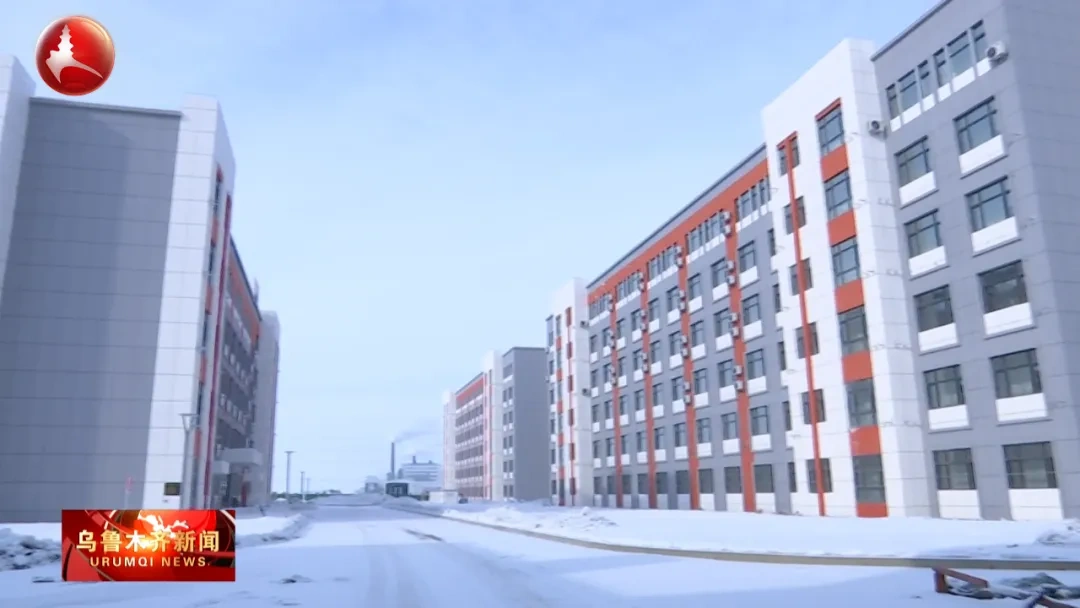 Screenshot of Urumqi’s local news program showing outside view of the youth apartments
Screenshot of Urumqi’s local news program showing outside view of the youth apartments
Project director Liang Xiaoguang introduced that the apartments offer various unit types ranging from single rooms to four-person units. All units come fully furnished with complete amenities including furniture, televisions, shower facilities and other necessities. The residential complex features comprehensive commercial supporting facilities such as dining options, supermarkets, and pharmacies. The second-phase construction will add an underground parking garage to further improve convenience for residents.
 Screenshot of Urumqi’s local news program showing workers installing furniture and electrical appliances in a unit
Screenshot of Urumqi’s local news program showing workers installing furniture and electrical appliances in a unit
At present, 11 companies in the zone have signed agreements to lease the apartment units in this youth apartment complex. The occupancy rate is projected to reach 90% by the end of June, with the completed project expected to accommodate over 2,000 residents.
In addition to this nearly completed youth apartment complex, another apartment project in Ganquanbao Economic Development Zone has been fully finished. The 332 fully furnished apartments come with standardized furniture and appliances, along with amenities such as a basketball court, badminton court, and gym.
“With daily rents ranging from ¥31 to 46 ($4-8), the property offers concierge-style services, and company shuttle buses provide direct transportation to the industrial park, saving tenants over ¥1,000 ($136) per month in commuting costs—it’s incredibly convenient,” said Ma Shuai, a resident.
 Screenshot of Urumqi’s local news program showing Ma Shuai working in his unit
Screenshot of Urumqi’s local news program showing Ma Shuai working in his unit

Anonymous
Everytime I read a new article about China’s new achievements I am truly amazed and thankful. China is creating a new world of innovation that I know will lead to a golden age. The century of humiliation is long gone for now we are living in a century of jubilation. From the deepest part of me I salute your efforts and support you.
阳光路上
无限风光
前行的脚步日夜兼程
不可阻挡
阳光路上